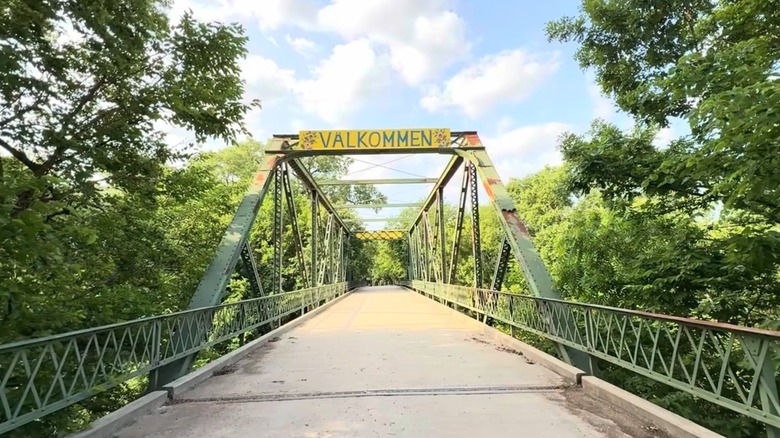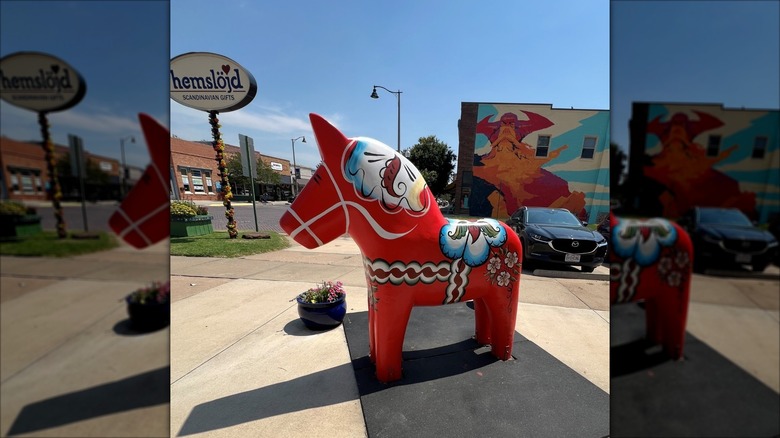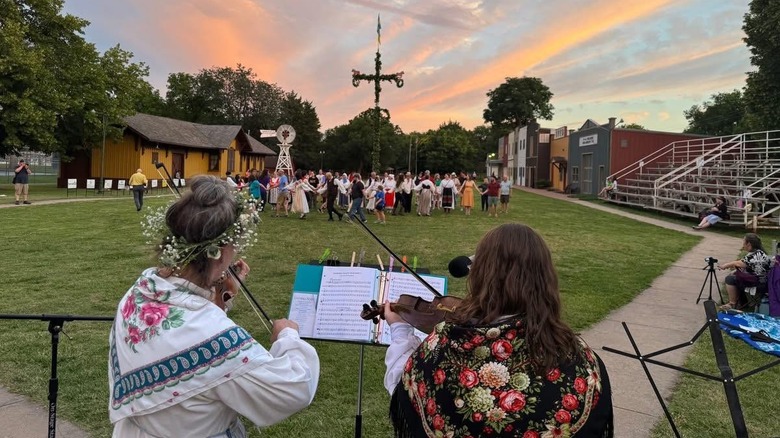'Little Sweden USA' Is A Kansas Gem With Charming Inns, Folk Art, Dala Horses, And Year-Round Festivals
Lingonberry waffles, smörgåsbord, and brightly colored Dala horses — Scandi fans don't have to travel to Sweden to experience the delightful custom of Fika. Lindsborg, Kansas was founded by Swedes in 1868, and it remains a core part of the town's identity. More than a million Swedes emigrated to the US between 1850 and 1950, and Lindsborg aims to continually celebrate that Swedish-American heritage.
Dubbing itself "Little Sweden, U.S.A.," Lindsborg proudly greets visitors with a sign that reads, "Välkommen" – the Swedish word for "welcome." The town also celebrates the Midsummer festival and the Swedish Christmas tradition of candlelit Santa Lucia. Every other year, Lindsborg hosts Svensk Hyllningsfest, a grand festival of all things Swedish.
If you want to bundle your Swedish curiosities in with more souvenirs from The Sunflower State, then you'll be pleased to hear that Lindsborg is only about a two hour drive west of Topeka, the state capital, recently ranked as one of the best cities to retire to, and an hour north of Wichita, a wildly-underrated and bustling city hub.
What to see and do in Lindsborg
A good place to begin your visit to Lindsborg is the Old Mill and Swedish Heritage Museum. This site tells the story of Swedish immigration to Kansas, particularly in the Smoky Valley region. Museum staff can also assist visitors with searching through the town's archives for traces of Swedish ancestors, finding names from each branch of your family tree. In addition to its historic flour mill, built in 1898, the Old Mill and Swedish Heritage Museum also has a restored homestead cabin where multiple families lived in the 19th century.
From there, the Valkommen Trail is a bike-friendly pedestrian path that takes you past Lindsborg's other heritage sites, including the Birger Sandzen Memorial Art Gallery. Named after a 19th-century Swedish-born artist, the gallery celebrates Sandzen's paintings of Kansas landscapes. His vivid style and swirling brushstrokes earned him the nickname the "Van Gogh of the Plains". The gallery is also just a short walk away from the historic Bethany Lutheran Church, where the Swedish Coffee Group meets every Friday morning.
The church is also the hub of Christmas season celebrations, when a young girl representing Santa Lucia dresses in white with a crown of candles to hand out ginger cookies and other Swedish sweets. If you're lucky enough to be in Lindsborg during an odd-numbered year in October, then you'll be there for Svensk Hyllningsfest, an every-other-year celebration that sees the downtown area transformed into a festival of Swedish arts and crafts, folk dance, and, of course, Swedish food. Townsfolk wear traditional sverigedräkten to complete the picture of "Little Sweden."
What to eat and where to stay in Lindsborg
No trip to Lindsborg would be complete without indulging in some classic Swedish dishes. The Crown and Rye on Main Street serves traditional kottbullar, Swedish meatballs, along with creamy dill potatoes, beetroot salad, and other Scandinavian favorites. Just down the street, you'll find the White Peacock Coffee Shop, which offers classic Swedish pancakes, thin crepes with cream and lingonberries – the perfect combination of sweet, creamy, and tart. Öl Hops (a Swedish phrase for "Ale House") is a local tavern serving up locally-distilled Swedish-style vodka. Check out their gorbatini, a vodka cranberry martini, which has been served to none other than former Russian leader Mikhail Gorbachev.
The Dröm Sött Inn is a boutique hotel of just 18 rooms. Named after a Swedish phrase meaning "sweet dreams," the Dröm Sött has Swedish pine beds in a 100-year-old building that was once a seed store, and then became a Studebaker dealership before it was turned into Lindsborg's first luxury hotel. Today, it's a cozy inn that prides itself on Swedish hospitality. And after a trip to this charming little town, you'll soon discover that there's plenty more to explore in Kansas's Smoky Valley. Nearby is Coronado Heights, an unusual historic site with unparalleled views over the Great Plains.


